Noise and Heat
We run two sets of noise tests, in order to provide a more comprehensive picture of how loud each SFF is. Our standard test uses the same setup as our performance benchmarks. For our low-noise test, we install a fanless GPU into the system, or for systems with integrated graphics, we will use those. Mid-range to high-end graphics cards can contribute substantially to the amount of noise that a system emits, and using a lower performing graphics card will frequently reduce noise levels to the point where our SPL meter can no longer produce accurate readings. In such a case, we will simply put 30 dB as the value, and for most people, this will be close enough to silence that the system will not be noticed. Here are the results for the SN25P.
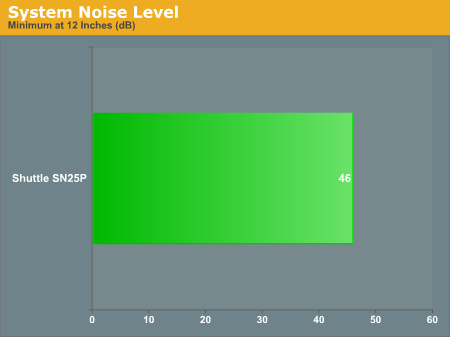
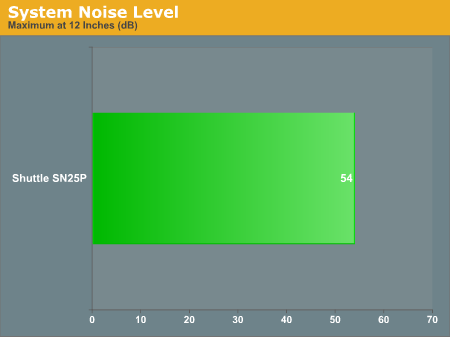
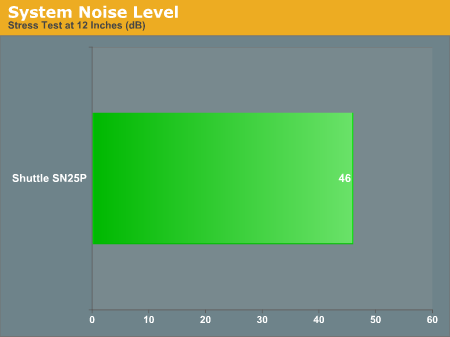
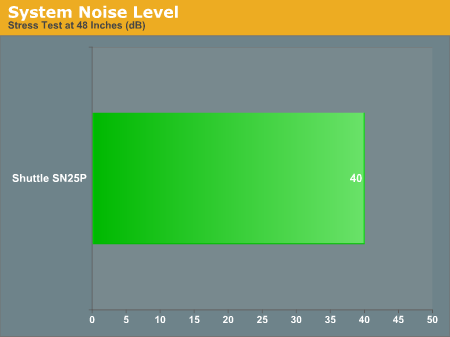
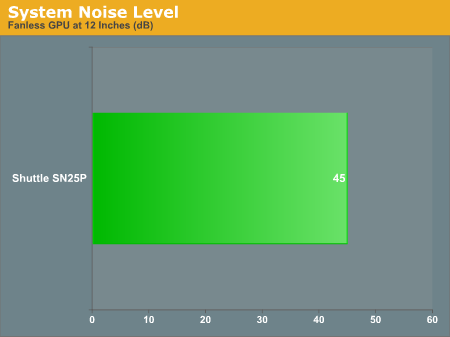
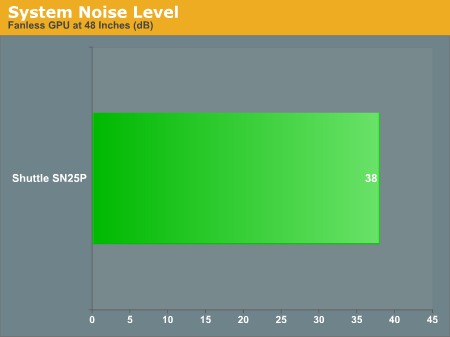
For the heat test, we use a laser thermometer to record the temperatures of various key components. It is important to note that these are surface temperatures only and not a reliable means of determining core temperatures. Most system BIOSes report temperatures for the CPU, but in the past, we have found that differences in BIOS programming can cause a difference of 10° C or more. What is really important with a SFF unit is that the system functions as advertised. Slightly higher system temperatures are often accompanied by lower noise levels, which we feel is a fair compromise.
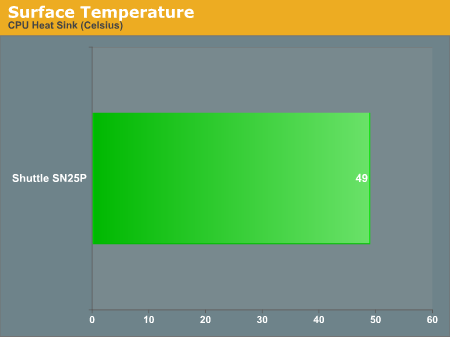
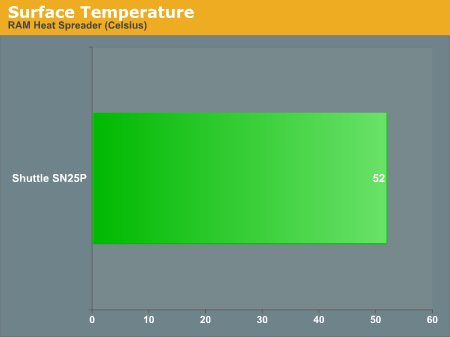
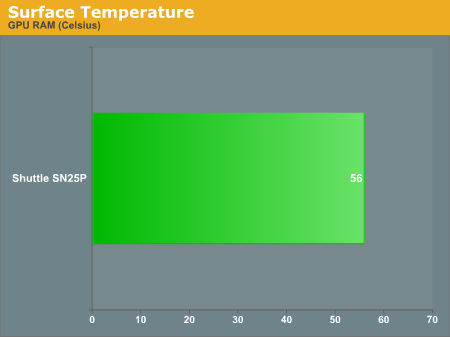

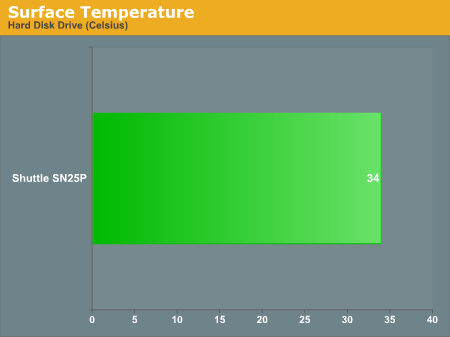
The heat levels of the SN25P were more than acceptable. We did not experience any issues during testing, and even with three HDDs installed, the design appears to provide sufficient cooling. (Loading up the system with three HDDs will typically increase noise levels, however.)










30 Comments
View All Comments
CrystalBay - Wednesday, March 9, 2005 - link
Nice review, 375.00 is that Shuttle's retail price ?I like the PSU is there any rating on the 12v line.
JarredWalton - Wednesday, March 9, 2005 - link
8 - I didn't have any difficulty installing a DVD drive into the SN25P. The "button" has a fairly large range of movement, which allows it to work well. Also, the screw-less design of the CD worked well for me.As far as the graphs go, my intention is to actually go back and add in figures for the SN95G5 and Soltek 3901-300 Pro when I finish testing them, so in the future the charts will hopefully become more meaningful. Having only run one set of benchmarks for this particular configuration made the benchmarks somewhat superfluous for the time being. :|
Gioron - Wednesday, March 9, 2005 - link
One thing that I noticed was that all the noise and heat graphs were on their own seperate scale. This might not be as big a deal when there are multiple cases on the chart, but when there is only one it makes it impossible to just run your eye down the chart and see what the range is. I'd really recommend picking the largest scale and sticking with it for all the charts (and preferably, do the same when there is more than one case on those graphs).Other than that minor layout glitch, a fairly good review. One thing I was wondering, however, was how well the cover over the CD drive works. I know my G5 series case takes a lot of tweaking to get the CD drive positioned just right so that the button will actually open the drive, have they improved that in the P series chasis?
OrSin - Wednesday, March 9, 2005 - link
Not impressed at all.Case too big, and no PCI slot is huge turn off for me.
I think alot SSF users use thier system as HTPC and this system just will not work. I would perfer a wider case, than a taller one. And no PCI slot means no TV tuner or FTA cards.
Maybe I will wait for the one with the ATI motherboard, or the Biostar or just get a HTPC case and get a real motherboard in it.
Oh yeah $400 is little steap even for SFF cases.
JarredWalton - Wednesday, March 9, 2005 - link
#5 - blame my camera. It's definitely NOT a high-end model. Most of the external shots were provided by Shuttle, so I used those as a better quality image. The front panel *does* have a speckled look to it. Maybe I'll see about upgrading to a better camera in the future. Right now, the originals are taken at 2048x1536 (the max of my 3 MP Fuji camera), but after cropping and misc. cleanup I resized them to a more manageable format.IceWindius - Wednesday, March 9, 2005 - link
Ok, why do alot of these picture in their large format look very grainy like it was done in 640x480 mode?IceWindius - Wednesday, March 9, 2005 - link
Well see how well this machine does in the reliable department as many people complained about the SN95g's issues.That and I want to see Creative make a PCI-E soundcard as well as onboard sucks period.
deathwalker - Tuesday, March 8, 2005 - link
#1...for the most part i agree that overclocking wont be a issue with a lot of SFF buyers. One point of concern for me would be the absence of a PCI slot for standard PCI periphrials..such as a TV tuner card..which i have in my system and use frequently.This does look like an attractive device though with a little extra room than most SFF's and a Power Supply with some performance margin in it.
pbrain - Tuesday, March 8, 2005 - link
Fantastic review. Now, where and when are they going be available?!segagenesis - Tuesday, March 8, 2005 - link
And I thought my SN41G2 was expensive at $300 when it was new. Ouch!Good review, however. I dont think overclocking is a major selling point for a SFF when most people want one for noise/size/convenience.